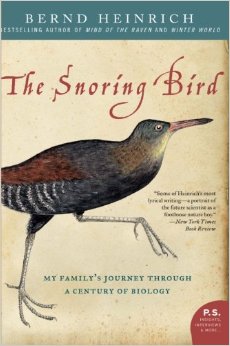 |
| Real gardeners spot beneficial insects and provide intermediate food and shelter for them. |
A FEMALE ICHNEUMON WASP, PROTICHNEUMON pisorius, is on the most important mission of her short life: finding a caterpillar. Most probably she is hunting for one that blends in with the foliage or bark where it hides and is almost invisible to human eyes and to the birds that have hunted these caterpillars relentlessly over millions of years. Birds hunt by sight; the ichneumons hunt mainly, but not exclusively, by scent. Not any caterpillar (or its pupa) will do. Like the over 6,000 other species of the Ichneumoninae— all of them parasitize Lepidoptera (moths and butterflies)— this particular Protichneumon will search for something very, very specific. For her, it is the caterpillar of a green sphinx moth that is artfully camouflaged like a leaf. This ichneumon has a bright reddish-brown abdomen. Her thorax, legs, and antennae are black, but they are adorned with splashes and rings of lemon yellow. She is beautiful and she is large— at over 2 centimeters long, she is one of the largest ichneumons occurring in Europe.
There are a huge number of species in the Ichneumoninae, because almost every moth and butterfly in the world has at least one of these wasp species as its parasite. Like birds’ eggs, most ichneumons are strikingly colored in combinations of reds, yellows, blues, and browns, and black and white. Their color variety is endless, and so are their shapes and their body sculpturing, which Papa used to identify and describe them. As some moths and butterflies are rare, the ichneumons— their parasites— are necessarily much rarer still. Beyond the subfamily Ichneumoninae lies the rest of the family Ichneumonidae, which includes probably well over a million species in numerous subfamilies. These other members of the family parasitize a wide variety of insects and their larvae, including Lepidoptera, among others. Although most species are rare, collectively they play a vital ecological role in preventing or reducing caterpillar plagues that can, and occasionally do, defoliate forests.
Heinrich, Bernd (2008-12-24). The Snoring Bird (Kindle Locations 1175-1181). HarperCollins. Kindle Edition.
 |
| The Heinrich family did much of the early research on the Ichneumon wasp. |
One photographer says my garden is ideal for his camera because the diversity and lack of poisons create an area where many insects find a home.
My early, varied rose bud and blossom damage came from a number of pests - aphids, ear wigs, and some chewing bug. Although there is still some damage to the lighter roses, that seems to be decreasing.
Slug Patrol, 2 AM
A reader wanted to know if my night patrol would continue. The promised rain at night did not come so I went out after Sassy had her trip outside. The Passion Flower area has three bowls of beer where the slugs had their final party for the last several days. Even though it rained buckets during the day, no slug was evident glistening in the glare of the LED flashlight.
Likewise in the well prepared Emergency Room for the Butterfly Bush, the plant was recovering. Its sisters, the Bonnie variety, very tall when full grown, were planted at the same time and growing well, but this one was surrounded by slugs at first - whittled down before I knew the source.
The ER for slug recovery can have crushed egg shells, whose sharp edges discourage slugs. I also pounded clay pots to provide longer lasting shards, a micro tank trap of sorts. Lastly, I powdered the area with diotomaceous earth, which slugs and bugs find fatal in scratching open their skin. To be more certain in the upcoming rainy days, I will fashion a copper area around each plant.A slug cannot pass over copper, due to its built-in electrical charge.
 |
| Photography cannot do justice to this white rose. The John Paul II rose is snowy without a trace of other colors. |
John Paul II Roses
Saturday afternoon, after the cloudburst, I harvested all the roses for the altar. As a result, many shorter roses were cut and left near the roses. Our helper came over to do some mulching or trimming. Spotting the newly cut roses, he asked for a vase to take them home. He had a bouquet in no time, so he went home happy after the mulching was done.
The sunny garden had a Jack and the Beanstalk growth of grasses bursting through the original mulching that I put down. The sunny straw bale garden has all the ingredients for growth - sun, watering, and lots of organic matter rotting into the soil and distributing nutrition to everything. The old autumn leaves suppressed the grass for a long time, but now I wanted the three Veterans Honor roses isolated with mulch rather than drowning in grass.
 |
| Veterans Honor is velvety, fragrant, and pure red. |
